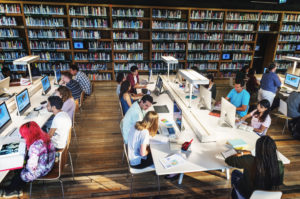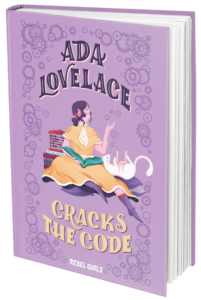 Original ideas and new avenues of research can be found in some of the more unorthodox locations, on and offline, so here is a guide to some of the more unusual resources available.
Original ideas and new avenues of research can be found in some of the more unorthodox locations, on and offline, so here is a guide to some of the more unusual resources available.
Whilst standard resources available in academic libraries are important and should always be the first port of call for any research project, chosen or assigned, there are several less common resources that are worth exploring. They may require extra time and diligence but can pay dividends and find references that might otherwise elude you.
Wikipedia
Despite its reputation for dubious accuracy, in recent years Wikipedia has worked harder than most websites to give its entries a much stronger factual basis and each entry has references section which lists the basis for every assertion. Entries may also have a bibliography and external links. Wikipedia’s Reliable Sources guidelines mean that many of these links are to scholarly sources. So, as well as providing an overview of a subject in the main section, underneath will be a readymade list of most likely the standard texts on that subject or at least a starting point for further research using the more usual options. The entry for the Bernoulli differential equation, for example, provides both a reference to the mathematician’s original German publication and a more contemporary text which provides the underlying sources for the Wikipedia entry.
The Internet Archive
Begun in the mid-90s as a private attempt to keep a back-up of the entire world wide web, the Internet Archive has grown to become a massive resource of every kind of media. That includes instant access to rare journals and books, which may otherwise only be available through interlibrary loan, and which can be borrowed with an archive.org account. Keyword searches might also lead to unexpected results, and user uploads mean that long out of print science and computing magazines can be read in their entirety. The archive has an ambiguous approach to copyright, but most of the textual materials have been uploaded by academic and public libraries. The Wayback Machine also allows us to view the web as it has looked over the decades. Here’s how New Scientist looked back in 1997.
Local newspapers
Local Newspapers are usually available through the press databases subscribed to by your university or a public local history library, most likely on microfilm or in bound volumes. Many are also available through the Google News Archive, which features publications from around the world and in numerous languages. Useful as anecdotal colour for case histories, they could also offer historical background on a geographical area at a more localised level than found in more generalised materials.
Local history libraries
Local history libraries are also often a repository for local defunct institutions including factories and science related institutions as well as for major construction projects, which may include maps and blueprints. Most libraries will now have their resources searchable online but it’s often best to approach them by phone or email beforehand because they’re more like to know what’s available in their collection, perhaps something you may not have even considered.
Art UK
Resources which might seem to be a hundred and eighty degrees away from STEM disciplines should never be overlooked. Art UK contains records and photography for every public art collection in the country, which includes universities, hospitals and science museums. Visiting their collection pages and keyword searches reveal a trove of, for example, illustrations and paintings of vehicles, factories and hundreds of historical medical drawings. Perhaps of most use to those studying the history of science, this could also provide seasoning to the background section of an investigation into a more cutting-edge area. The Science Museum’s collection offers a good overview of the kinds of images you can expect to find.
Book Indexes
Of all these ideas, this requires the most time and a methodological approach and should be used only when other avenues have been exhausted. It’s certainly the most labour intensive. Perhaps with the aid of a Wikipedia article, create a list of keywords and then work through the relevant subject area in a library checking for them in the back indexes of each book, volume by volume, shelf by shelf. Depending on the topic, this can lead to items which might not otherwise look like they’d be useful through the synopsis or contents page pointing to a useful anecdote or new area of research.
By Stuart Ian Burns
Stuart Ian Burns is a writer and qualified librarian who works in academia.
 Would you say “no” to a student who “wants a chat” about how their course is going? Could you? Should you? What about the colleague who wants a coffee to get your opinion on how they are being managed? If you can’t say no to these, you may have accidentally become a ‘department parent’.
Would you say “no” to a student who “wants a chat” about how their course is going? Could you? Should you? What about the colleague who wants a coffee to get your opinion on how they are being managed? If you can’t say no to these, you may have accidentally become a ‘department parent’. Women are the powerhouse of the economy.
Women are the powerhouse of the economy. Your academic email address can get you access to all sorts of useful and entertaining services. Here’s how to access some of them.
Your academic email address can get you access to all sorts of useful and entertaining services. Here’s how to access some of them.